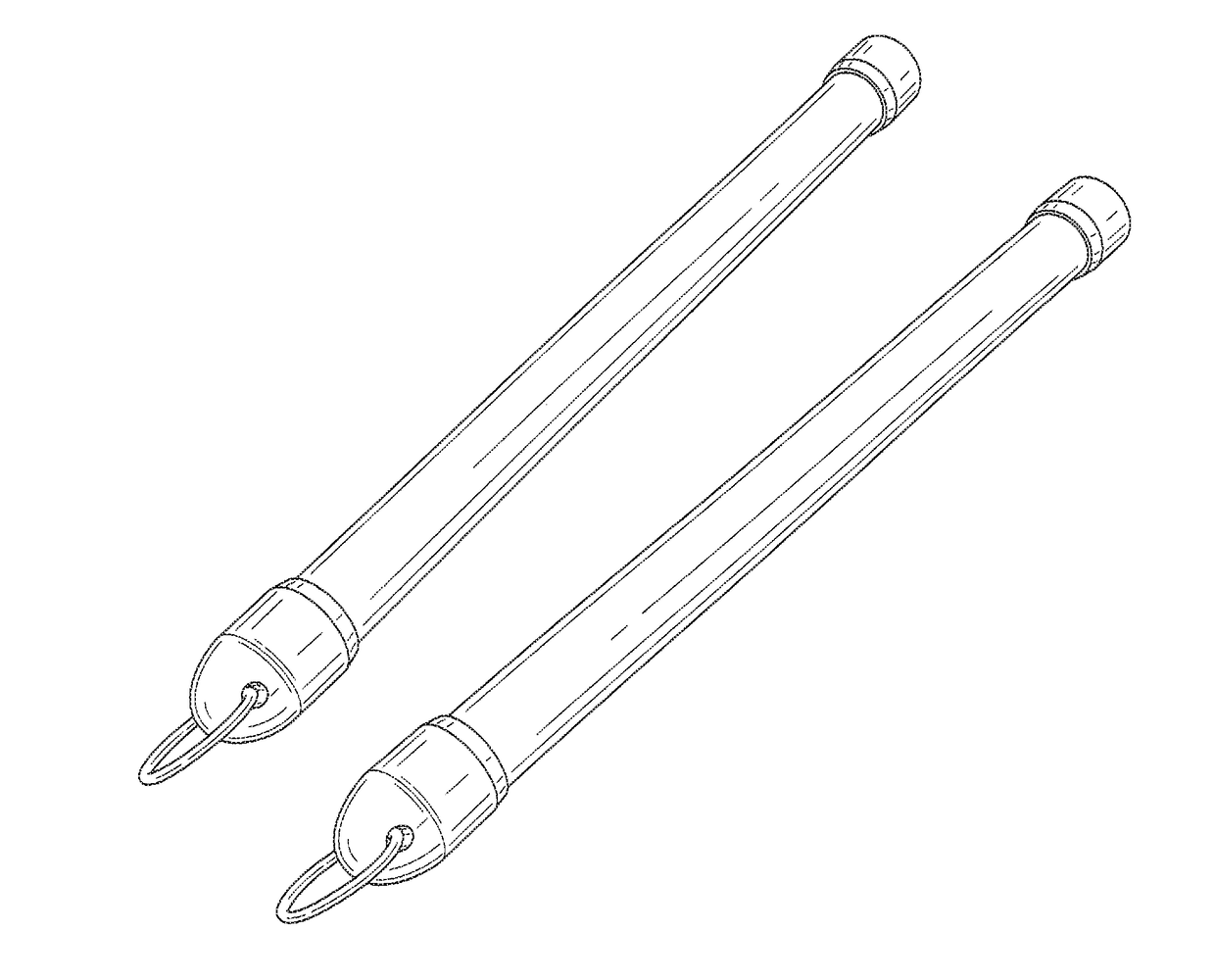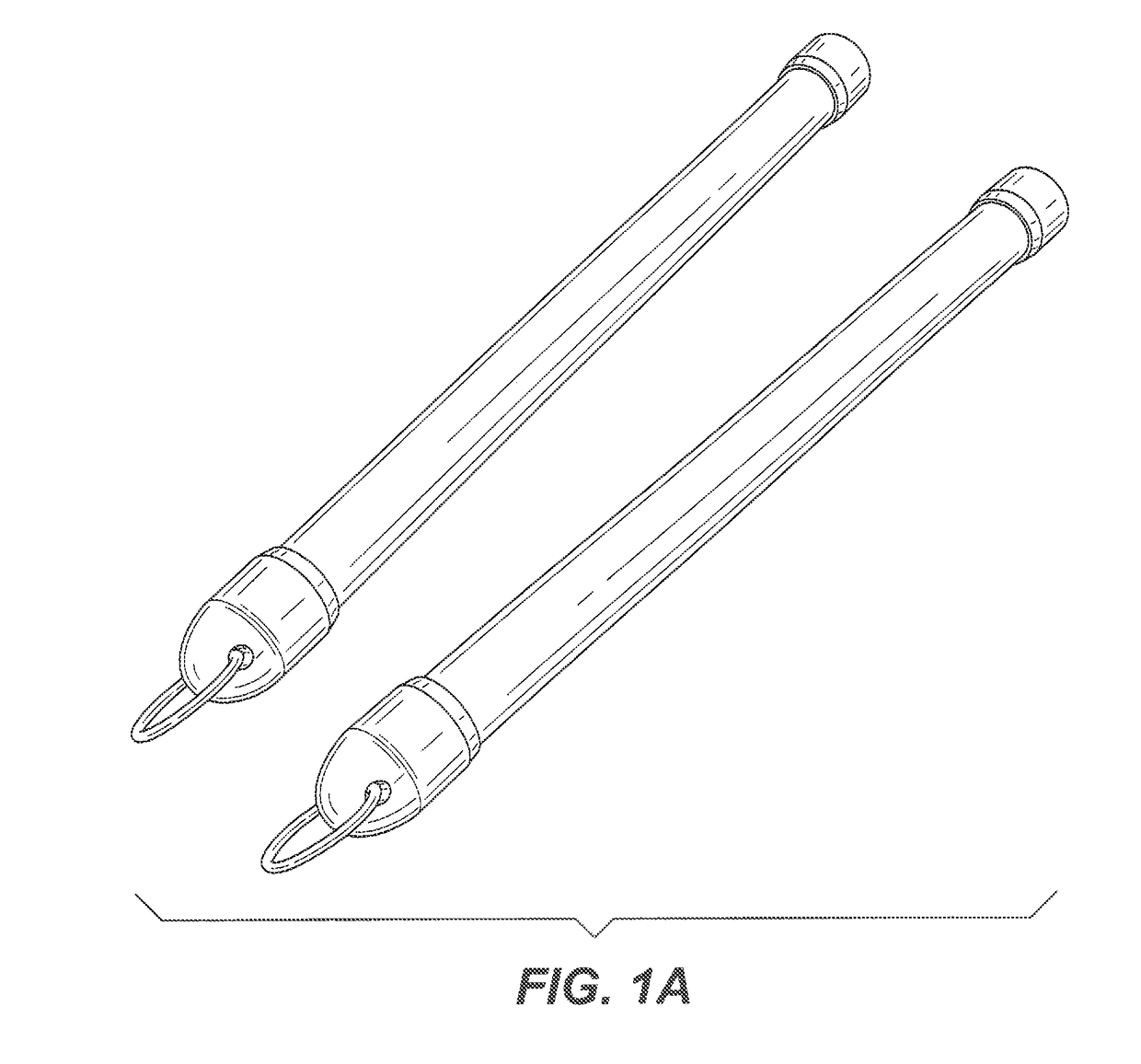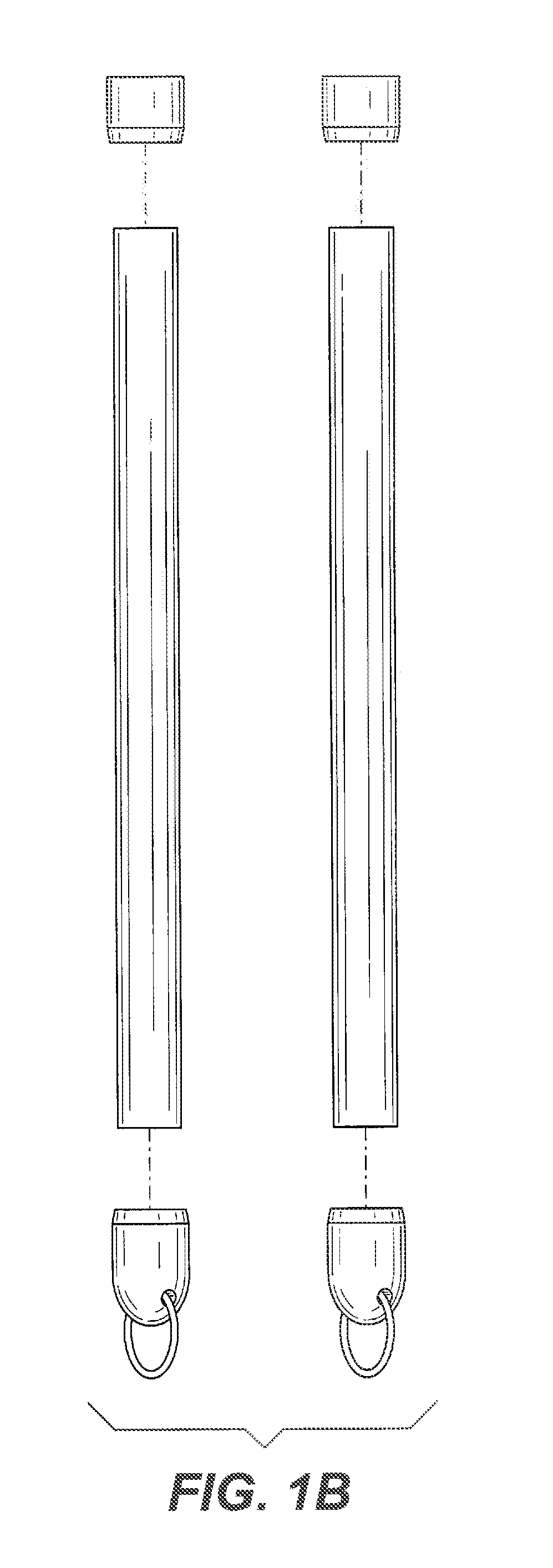Method and Devices for Enhancing Speed, Stride, and Balance While Walking and/or Running
a technology speed, applied in the field of walking and/or running performance enhancement methods and devices, can solve the problem that he could never beat the time of 10 min for completing a one-mile run, and achieve the effects of reducing reducing muscle soreness, and eliminating the five most common injuries
- Summary
- Abstract
- Description
- Claims
- Application Information
AI Technical Summary
Benefits of technology
Problems solved by technology
Method used
Image
Examples
Embodiment Construction
[0030]Sensorimotor Awareness Reintegration Training (SMART) is a method that preferably uses specialized devices (herein called “Stride Sticks”) using specific body measurements of the user, stride stick sensorimotor exercises, proprioception exercises, and specific stretches, to engage the sensorimotor system of the brain so as to increase stride, balance, stability, and mobility.
[0031]Everyone is affected by the aging process; bodies degrade and so do abilities. SMART helps to engage body awareness utilizing personal measurements of a person, thereby making the person safer, more balanced, and enhancing the person's understanding of where their body is in space and time. Due to the aging process, one's stride gets smaller, and as one's stride gets smaller over the years, the person experiences a decrease in balance, and an increase in the risk of falling. Thus, as the stride gets smaller, the sensorimotor complex decreases, which increases the risk of falls.
[0032]The sensorimotor ...
PUM
 Login to View More
Login to View More Abstract
Description
Claims
Application Information
 Login to View More
Login to View More - R&D
- Intellectual Property
- Life Sciences
- Materials
- Tech Scout
- Unparalleled Data Quality
- Higher Quality Content
- 60% Fewer Hallucinations
Browse by: Latest US Patents, China's latest patents, Technical Efficacy Thesaurus, Application Domain, Technology Topic, Popular Technical Reports.
© 2025 PatSnap. All rights reserved.Legal|Privacy policy|Modern Slavery Act Transparency Statement|Sitemap|About US| Contact US: help@patsnap.com



